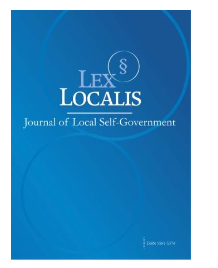ENHANCING ZAMBOANGA CITY’S URBAN FLOODING RESILIENCE: A FORWARD-LOOKING EVALUATION OF FLOOD MANAGEMENT AND HAZARD MITIGATION STRATEGIES
DOI:
https://doi.org/10.52152/8qe7vh09Keywords:
urban flooding resilience, flood management, hazard mitigation, governance and policies, and infrastructure and engineeringAbstract
Rivers are vital to sustaining human settlements, yet human interventions have disrupted natural fluvial processes, leading to ecological degradation, altered river dynamics, and heightened flood risks. Floods remain the most common and destructive natural disaster worldwide, causing severe social, economic, and environmental damage. Zamboanga City, Philippines, exemplifies these challenges, frequently experiencing floods exacerbated by inadequate management and mitigation strategies. This study evaluates the effectiveness of the city’s flood management and hazard mitigation programs as a forward-looking assessment of its urban flood resilience, aligning with Sustainable Development Goals (SDG) 16.3 on Strong Institutions and SDG 17 on Partnerships for the goals. A mixed-methods approach was adopted, combining surveys of 200 residents in flood-prone barangays with qualitative data from KIIs and FGDs of 30 government officials, planners, engineers, and disaster risk reduction personnel. Findings revealed that 59.5% of respondents perceived their communities as inadequately prepared, and 57.5% expressed dissatisfaction with mitigation measures. Key challenges identified include poor infrastructure (36.5%), limited public awareness (28%), weak inter-agency coordination (21.5%), and insufficient funding (13.5%). Governance gaps were also evident, with respondents citing poor coordination (32.5%) and inadequate resources (27%) as primary issues. The study concluded that in order to address the key challenges identified policy recommendations derived should include infrastructure enhancement (adoption of state-of-the-art) and maintenance (through drainage systems improvement, river rehabilitation and dredging, and evacuation infrastructure); strengthening governance and coordination (through inter-agency collaboration, policy enforcement, and resource allocation); and community engagement and education (through public awareness campaigns, capacity building programs, and empowerment through volunteerism.
Downloads
Published
Issue
Section
License
Copyright (c) 2025 Lex localis - Journal of Local Self-Government

This work is licensed under a Creative Commons Attribution-NonCommercial-NoDerivatives 4.0 International License.








